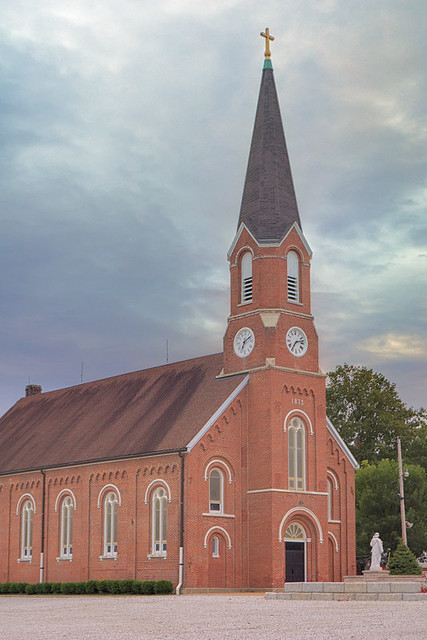
From the parish history:
The community now known as Josephville began in the early l800s as a mail stop and mercantile known as Schmuckers Store in Allen’s Prairie. The land was ceded through a Federal Grant under President Martin Van Buren by Joseph Allen in about 1837. Allen settled on a farm and, along with a group of other French and English settlers from the Virginias, made improvements to the land, erected buildings, then sold the land and moved on. The majority of permanent settlers were German immigrants who were able to purchase the land for $1.25 per acre.
One of these immigrants was Anton Kersting, who purchased the Allen property. In 1848 a parish began to organize when Kersting held church services in his log home, a home which stands today on Hwy P. It was about this time that the area began to be known as Josephville.
In 1852 Kersting donated 10 acres of farmland to the congregation for a parish. A log church, 26 by 59 feet, was constructed. The first pastor of record was Father John Beotzkes. The first baptism occurred in 1857 with the christening of Gerald Brune, son of Christopher Brune and Katherine Kuhlmann.
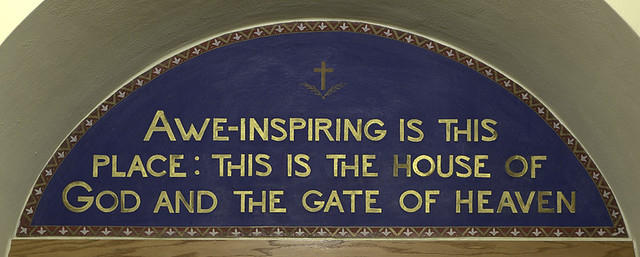
Awe-inspiring is this place: This is the house of God and the gate of Heaven. (Genesis 28:17)
Continuing the history:
Father Theodore Krainhardt came to Josephville in 1868, and in 1870 the cornerstone for a new church was laid. Construction continued through 1872.
St. Joseph Church has been referred to as “the oldest homemade church in the area". This is because clay for the bricks was dug from “the brick yard pond,” an area of red clay on the farm located across the road from the church. The bricks were baked “on the spot” on Leonard Rothermich’s farm at a cost of $4 per thousand. Lumber for the church floors and communion rail came from the trees of parishioners’ farms.
Local masons and carpenters performed the work, and on October 6, 1872, the new church was dedicated by Rev. Henry Muehlsiepen, Vicar General of the Archdiocese of St. Louis.
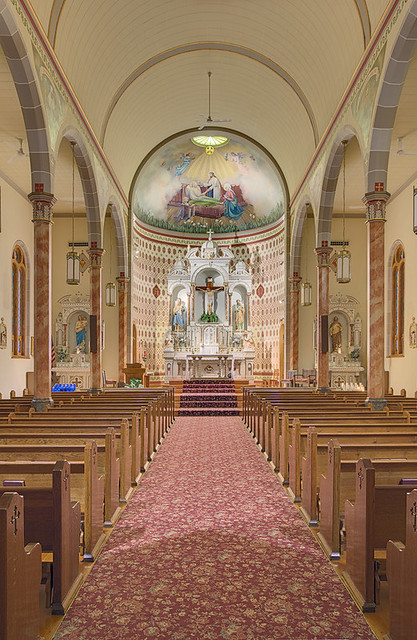
The interior of the church has been restored within the past ten years.
According to the 2010 Status Animarum or ecclesiastical census, this parish has approximately 881 Catholics.
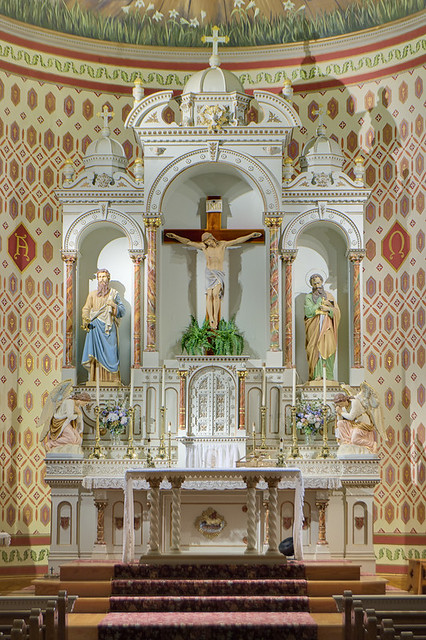
Our Lord Crucified is flanked by Saints Peter and Paul, Apostles and Martyrs.
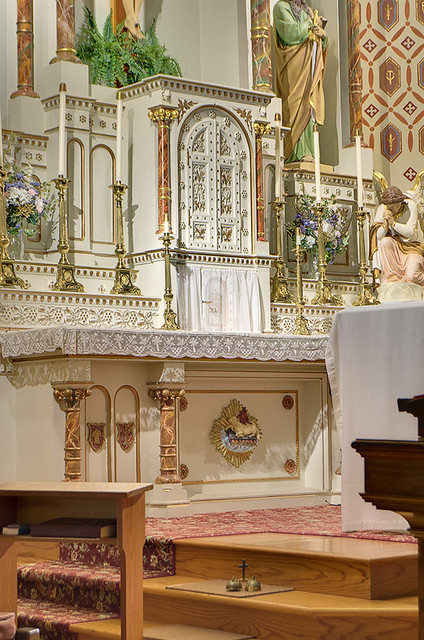
The tabernacle, over a depiction of the Lamb of God resting on the book of seven seals from the Apocalypse. To the left are shields apparently bearing the cloak of Christ and the Arma Christi, or instruments of Christ's passion. There are also statues of angels in adoration.
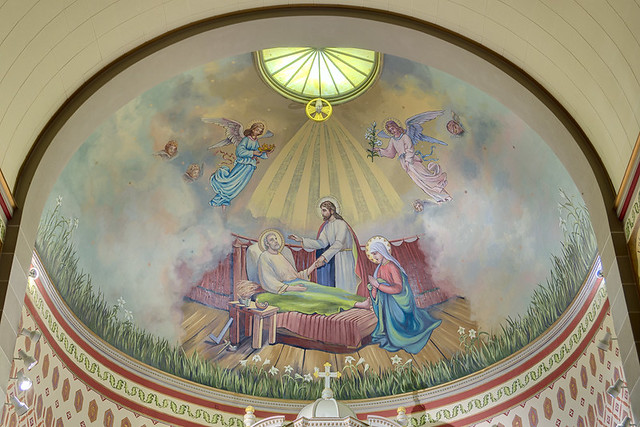
In the dome over the sanctuary is a painting of the happy death of Saint Joseph. According to the parish website:
The mural, as the story goes, was originally painted by a traveling artist who appeared unsolicited and offered to paint the domed ceiling. After completing the work, the artist left the area before the negotiated fee could be paid and without signing the painting. This generous artist remains anonymous today, lending an air of divine origination to the painting.In 1991, parishioners restored this painting.
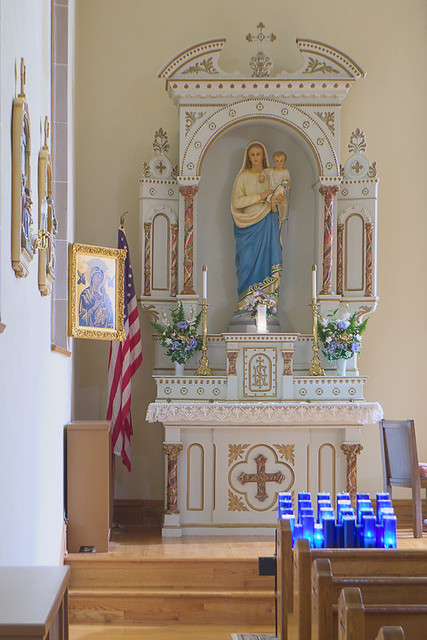
Altar of the Blessed Virgin Mary.
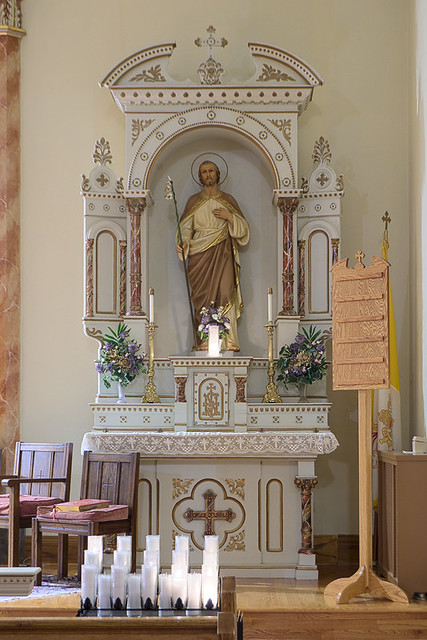
Altar of Saint Joseph, spouse of Mary, foster-father of Our Lord, of the line of King David. Joseph's patronage includes:
against hesitation or doubt, bursars, cabinetmakers, Canadian Armed Forces, carpenters, civil engineers, confectioners, craftsmen, dying people, emigrants, expectant mothers, families, fathers, happy and holy death, house hunters, immigrants, interior souls, laborers, married people, people who fight Communism, pioneers, social justice, travelers, unborn children, the Universal Church, the Second Vatican Council, wheelwrights, and workers, as well as the Americas, Austria, Belgium, Bohemia, Canada, China, Croatia, the Koreas, Mexico, New France, Peru, and Viet Nam.
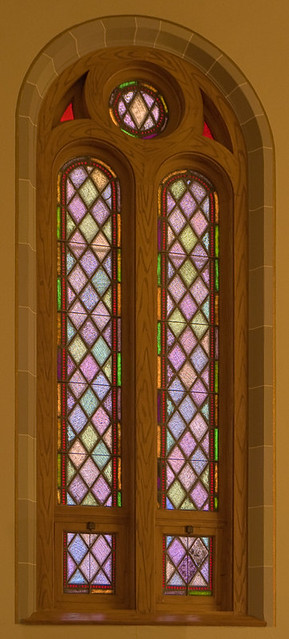
A stained glass window.
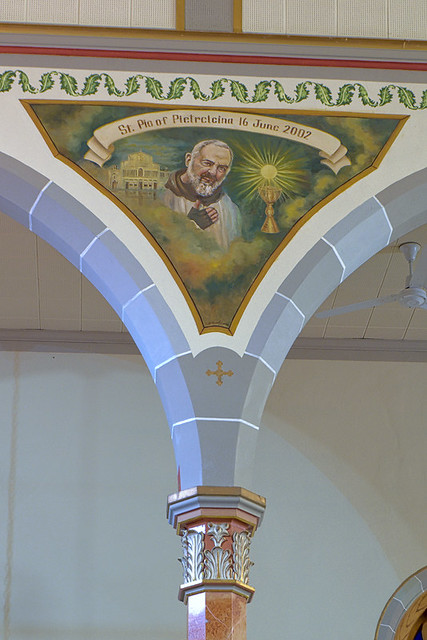
Above the column capitals are depictions of Saints canonized in recent years. Here is Saint Pio of Pietrelcina (1887-1968), better known as Padre Pio. His feast day is September 23rd.
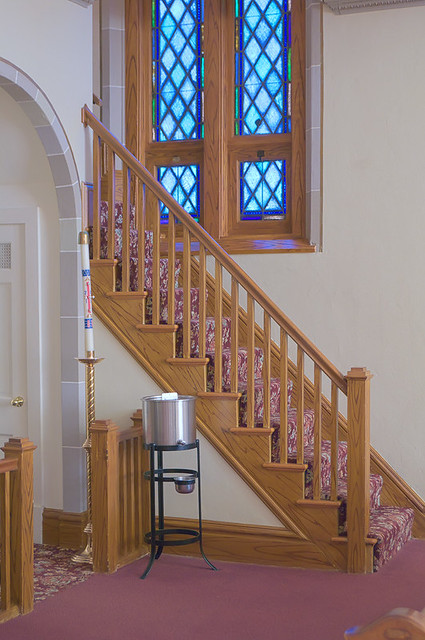
Stairs leading up to the choir loft.
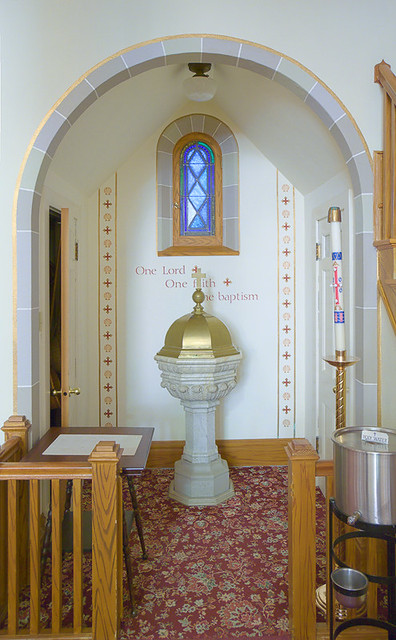
One Lord, One Faith, One baptism.
The baptismal font.
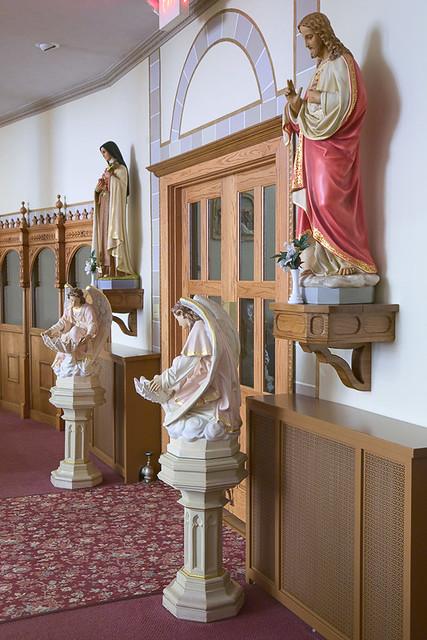
Saint Thérèse of Lisieux and the Sacred Heart of Jesus, with angels holding holy water fonts.
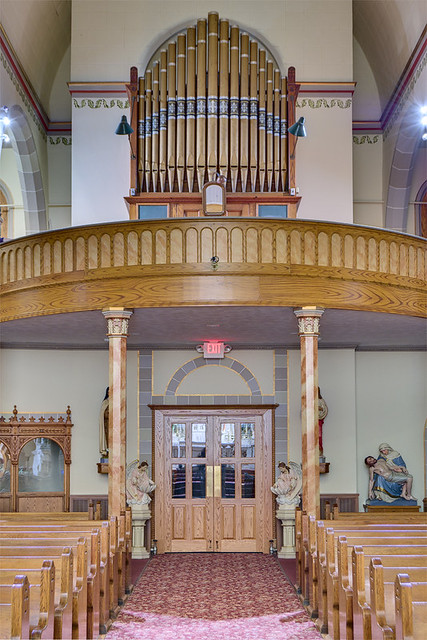
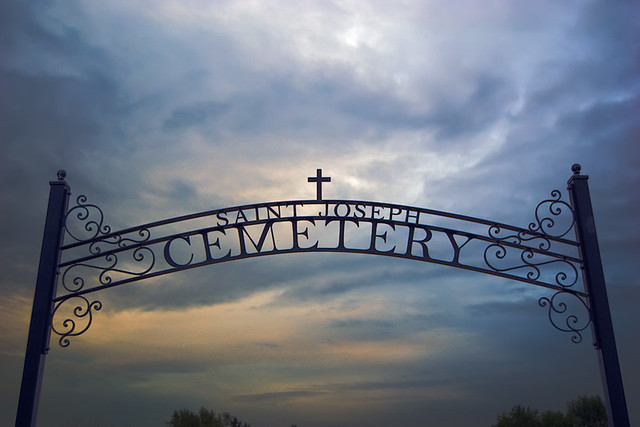
Gate to the cemetery.
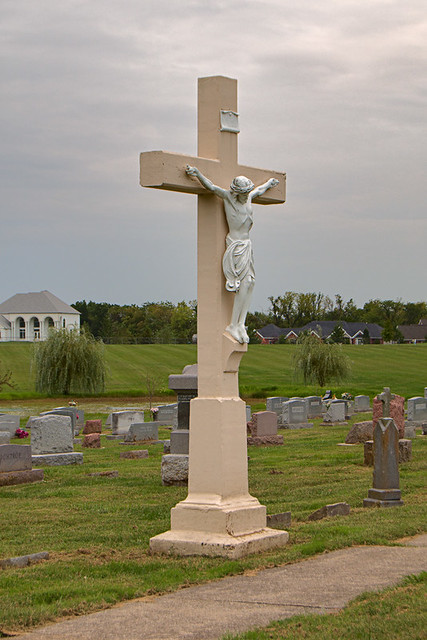
Crucifix in the cemetery.
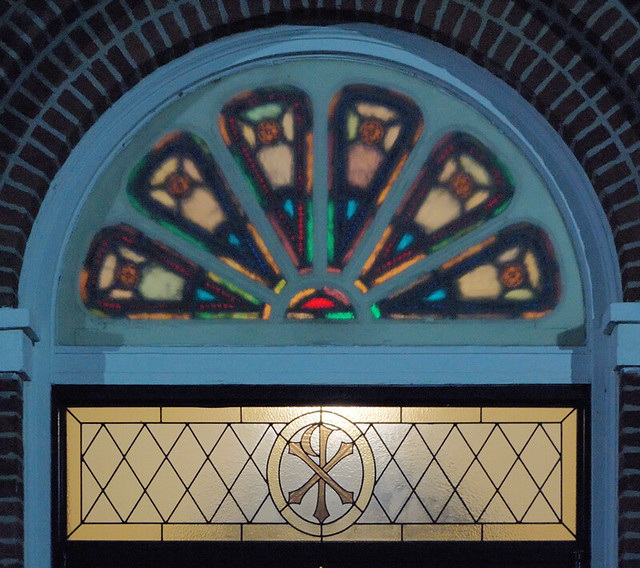
Over the front door of the church.
Mass Times:
Weekdays: 8 a.m.
Tuesday: 7:30 p.m.
Saturday Vigil: 5:15 p.m.
Sunday: 7:30 a.m. and 10 a.m.
Adoration:
Tuesday: 8:30 a.m. - 7:30 p.m.
Address:
1390 Josephville Road
Wentzville, MO 63385


The moment I saw that painting above the alter I thought of my parents home church St. Joseph's in Bonne Terre. These two churches have similar paintings above the alter and even the alters share subtle similarities.
ReplyDeleteI looked at my photos and they do look similar. Doing a quick image search on Google shows that the Holy Death of Joseph has been done very many times, but there are common elements - for example, Saint Joseph is almost always shown sitting in bed.
ReplyDeleteMark, to a west coast Catholic in a financially bankrupt diocese in which not a single parish was left untouched by the liturgical revolutionaries of the 70s/80s, these photos inspire nothing but envy. Perhaps God will send anonymous artists to come to the parishes of this diocese like the one who painted the apse mural of this church. Barring miracles like that it will take a lifetime or two to correct the damage done to get even a majority of churches in this diocese back to the point of actually looking like churches.
ReplyDelete